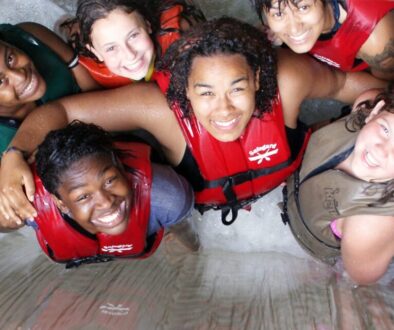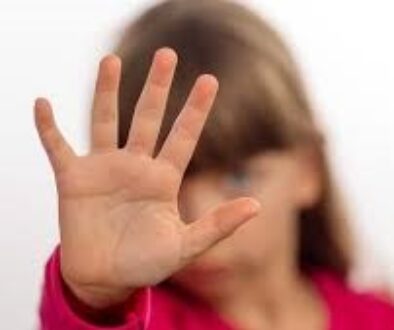Son of Jamaican Immigrants Tells His Tale
Originally posted in the Chicago Tribune on April 29, 2008 Kevin Gordon is the Canadian-born son of Jamaican immigrants. He has lived half of his 40 years in Canada and half in America. He has the unique perspective of seeing how both countries have handled and mishandled race. This is Kevin Gordon’s essay about immigrants:
Over the years, I’ve been a bartender, furniture mover, bus driver, blackjack dealer, and garbage man. I’ve traveled to Europe, Africa, Central and South America, and the Caribbean. I have a BA from Harvard University, a law degree from the University of California-Berkeley School of Law and I was an attorney at a prestigious law firm. I am a husband of eight years and the doting dad of a 2-year-old son. My wife and I own and operate Camp Kupugani, a multicultural children’s summer camp in Leaf River, Illinois. It is the sole black-owned private residential camp in the country.
Growing up as a Black Canadian differs greatly from growing up as an African-American. Early on in Canada, I learned not to categorize people—by skin color, ethnicity, or religion. Maybe this stemmed from how my parents showed their pride in both their cultural background as well as their adopted country. Maybe it was something about Canadian culture generally, where as a youngster, I got enough information about different folks to counter the development of stereotypes. With more than 200 different ethnic and cultural groups calling Canada home, the country does an impressive job of embracing its diversity.
In 1971, it was the first country in the world to adopt a Multiculturalism Policy, designed to provide programs and services that help Canadians, regardless of their background, participate in the larger society. As a young adult, during a Governor-General’s address (which is similar to America’s “State of the Union”), I remember being impressed by Canada’s attempts at “inclusivity.” During that address, the Governor-General apologized for national injustices that Canada had committed against its indigenous peoples. This national outlook informed my upbringing and made me a person who valued diversity.
I don’t mean to idealize Canadian culture, because like any society, it has its share of racism. However, a certain understanding and respect for people of all nationalities and ethnic origins thrives. Growing up, I sensed that people were Canadian and proud of being Canadian, while also being prideful of their particular ethnic heritage. A black Canadian, an Asian Canadian, and a white Canadian could easily, comfortably hold their hands in the air together and proclaim their national pride.
North of the border, I was and am Canadian and Afro-Caribbean. My American experiences of the past 24 years paint a contrary picture. Here, people who look like me are considered Black, or African-American. For many people of different ethnic or racial groups, their ethnicity or race trumps their American-ism. The prospect of a white guy and a black guy clasping hands and reveling in just being American often seems so foreign. My American experiences have included being followed around stores by security personnel—because of skin color; stopped for driving 3 miles above the speed limit—and for driving five miles below the speed limit—because of skin color. It also has included going to employee lunchrooms and seeing all of the black and brown employees sitting on one side and the white employees on the other. Too often it’s included learning about race riots, school skirmishes, and devastating deaths—because of skin color.
Race and racism permeate American institutions, corporations, schools, and communities. Unfortunately, we tend to avoid having difficult conversations about race with each other and with our children. I’m worried that our children will pay the most. Our biases infiltrate their DNA and they pass down our prejudices generation after generation. When I was a college junior, I had my first experience at a summer camp. That 10-week experience made me realize the amazing impact that camp can have on a young person’s life. The camp served a predominantly Jewish population. I soon discovered that most camps were similarly non-diverse and I resolved to one day start a multicultural camp. That’s how we came up with the idea of Camp Kupugani for girls.
“Kupugani” is a Zulu concept meaning “to raise oneself up.” Here, girls of different cultures and backgrounds, age 7 to 15, come together for fun and to learn empowerment and social skills. During our two-week residential program we focus on diversity. We believe that living, playing, and working together is the best way to instill bonds of friendship and trust, and break down the walls between us. It’s not easy. We have African-American girls from Chicago; white girls from the northern suburbs; first and second-generation Latinas and Arab-Americans; biracial adoptees of white parents; girls from Japan, Spain, New Mexico, and California.
Each girl brings unique biases and preconceptions. Even as we address issues of difference with a group of campers open to tackling those issues, it can still be difficult to fully understand one another. Still, with activities such as “I Am From” poetry, where the girls write about how they define themselves, they begin to understand what each individual brings to the community. Other activities force them to address, recognize, and let go of stereotypes. From our campers, I’ve learned that, if we work hard at it, we can learn to see and move beyond stereotypes. We can expand our narrow vision of what group identity means. By giving folks exposure to people of other cultures and backgrounds, we can broaden their choices. They can celebrate their individual cultures while embracing the larger culture. Then maybe one day their lives won’t mimic the adult world, with its sturdy, racially defined, suffocating barriers.





